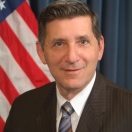
October 2016 marks the sixth annual observance of National Youth Substance Use and Substance Use Disorder Prevention Month (National Prevention Month). This month we highlight the vital role that prevention of youth substance use and substance use disorder plays in individual and community health.
As President Obama noted in the 2016 National Prevention Month proclamation, “Far too many young people are unable to grow and thrive because of substance use. And far too many precious lives are being taken from us as a result of drug overdoses, leaving families devastated and heartbroken.”
While communities across the country are working to prevent substance use, there is more to do. The opioid epidemic that confronts our Nation today highlights the urgency of this work.
Preventing youth substance use and substance use disorder saves lives and helps ensure brighter, more productive futures for young people. More than 30 years of research demonstrates that evidence-based prevention works. Not only that, effective prevention saves money. In fact, each dollar invested in effective school-based prevention programs can reduce costs related to substance use by an average of $18.[1]
Effective prevention changes behaviors among youth and young adults leading to reduced underage drinking, illegal drug use, and non-medical use of prescription drugs. Effective prevention approaches are research-based, can be replicated, and must be implemented over an extended period of time. However, not all approaches to prevention are effective and there is no one-size-fits-all approach for every community. This is important to keep in mind in assessing your community’s prevention efforts or in deciding on new approaches to adopt.
Evidence-based prevention strategies are tailored to the needs of specific communities and target the root problems that can lead to youth substance use.
Prevention approaches can be broad and encompass the entire community, or more focused on young people who are at risk of substance use due to factors such as family substance use, school or community environments and norms, or young people who have already begun to use substances.
You can learn more about how to select prevention approaches for your community and how to implement those approaches through a number of sites, including: the Substance Abuse and Mental Health Services Administration’s (SAMHSA) Evidence-Based Practices Web Guide,; SAMHSA’s National Registry of Evidence-Based Programs and Practices (NREPP); and, Blueprints for Healthy Youth Development. In addition, you can find general information about prevention here. Programs that have been found to work and be cost-effective include: the Strengthening Families Program; Guiding Good Choices; and, Life Skills Training.[2]
Join us in helping stop youth substance use before it starts, keeping it from progressing where it is present, and helping those with substance use disorders find the treatment and support they need to lead healthy and productive lives and contribute to their communities. By making sure your community is using evidence-based prevention approaches, you will be helping build a more resilient community..
###
[1] Miller, T., & Hendrie, D.(2009).Substance abuse prevention dollars and cents: a cost-benefit analysis. DHHS Pub. No. (SMA) 07-4298.Rockville, MD: Center for Substance Abuse Prevention, Substance Abuse, and Mental Health Services Administration.
[2] Robertson, E.A. et al. (2003). Preventing Drug Use among Children and Adolescents: A Research-Based Guide for Parent, Educators, and Community Leaders. Second Edition. NIH Publication No. 04-4212(A). National Institute on Drug Abuse.


